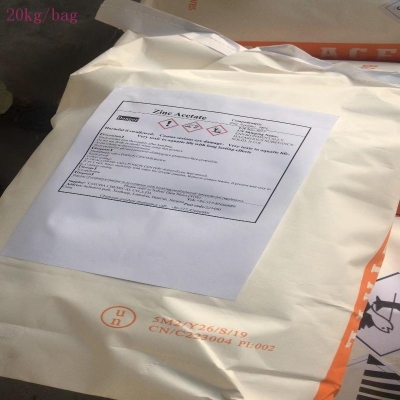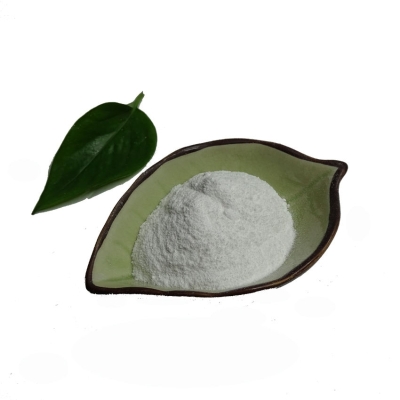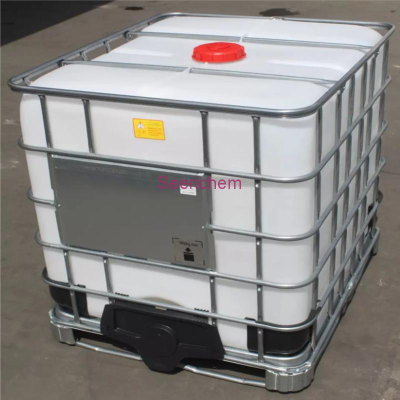-
Categories
-
Pharmaceutical Intermediates
-
Active Pharmaceutical Ingredients
-
Food Additives
- Industrial Coatings
- Agrochemicals
- Dyes and Pigments
- Surfactant
- Flavors and Fragrances
- Chemical Reagents
- Catalyst and Auxiliary
- Natural Products
- Inorganic Chemistry
-
Organic Chemistry
-
Biochemical Engineering
- Analytical Chemistry
-
Cosmetic Ingredient
- Water Treatment Chemical
-
Pharmaceutical Intermediates
Promotion
ECHEMI Mall
Wholesale
Weekly Price
Exhibition
News
-
Trade Service
Since May 7, the price of urea has started to rise again.
I am worried that this round of increase will be short-lived? The author judges that this round of rise has a solid foundation and will have a longer continuity.
The price increase of urea is nothing more than two situations: one is the price increase caused by expectations, which has obvious characteristics of fear of heights; the other is the price increase caused by rigid demand, and the price increase has a strong continuity.
The price increase in the last round is one that is far from the time it just takes, and the other is that it is realized only by the dissemination of false news.
After the falsification of the news, it will be difficult to continue.
This round of rise seems to have started unconsciously, and there is no major good news to fuel the flames, indicating that the rise is entirely driven by rigid needs.
From the actual situation, the south has entered the rice fertilizer season, the central plains is about to enter the corn planting time, and the time for maize topdressing in the northeast and other regions is not far away.
The national rigid demand has started and seamless docking, so this round of price increases Whether it will be interrupted, no longer depends on the price level, but only depends on the balance of supply and demand.
The market has switched from a model where prices are determined by bulls or bears to a model where prices are determined by real bulls or vacuum, and has become an objective market independent of human will.
Those who still believe that they can influence the market by expressing long or short views are doomed to fail.
So what is the balance of supply and demand? The author has made an analysis in the early stage: First, when the national corn planting area has fallen by 50 million mu, and the 50 million mu does not require one or two urea, the country is still in a tight balance; second, it is difficult to adjust the planting structure; third, The international market is at best the icing on the cake.
China's short-term dependence on the world has been very low; fourth, demand is delayed, not disappeared.
If this analysis of supply and demand balance can be established, combined with the analysis of the above mode switching, I have reason to believe that this round of rise will no longer be a flash in the pan, and will have a strong sustainability, and the possibility of a short-term new high is very high.
Many people think that this round of rise is a response to the decline in operating rates, and worry that once the maintenance companies resume production, they will start a new round of decline.
Fertilizer is a product that is lightly stored and sold well.
The surplus lies in accumulation, and the shortage lies in accumulation.
If there is a surplus, do not expect to be digested in one month; if there is a shortage, it is impossible to expect to be filled within a month.
As we have repeatedly experienced, price drops or price increases will last a long time.
What accumulated last year was a surplus, and what is more likely to accumulate this year is a shortage.
Under the current circumstances, it is simply unrealistic to expect to increase the supply of 1 million tons in one month, and there is only one month before the end of the peak season, making the increase in supply even more limited, so even if production resumes, it is difficult to curb price increases.
At present, the distribution channels and factory inventory are close to zero, and the operating rate is still declining.
, The seamless docking of current sales may be difficult to meet the upcoming nationwide fertilizer use.
Therefore, Hong Kong stocks are the last barrier to curb price increases.
The author has analyzed that only if the Hong Kong inventory drops to less than 500,000 tons, the domestic market will have the conditions for a big increase.
However, after deep thinking, the author has a new understanding of Hong Kong inventory: 1.
Although China's exports have fallen sharply, the amount of inventory through Hong Kong has decreased.
Domestic inventory, before the stock in Hong Kong does not return, is equivalent to reducing the effective supply, and the apparent consumption can be temporarily consolidated with consumption, which shows that the inventory of domestic circulation channels is lower than expected; 2.
Port inventory is mostly scattered Goods are three-no products and basically do not have the conditions to circulate in agricultural channels, so it is not easy to return.
Given that Hong Kong deposits have limited restraint on domestic price increases, and it is not ruled out that stable domestic increases will drive international short-covering, are we more optimistic about the trend of urea? Since September of last year, domestic bulk commodities have been showing up without exception when prices are rising, all in one go, and rigid demand is determined; when prices fall, they quickly fall to the cost line and low operating rates, using violence to describe the rise and fall of domestic commodity prices.
Not an exaggeration.
But this will be the new normal of China's bulk commodities: when there is rigid demand, prices will rise quickly to maximize profits; when demand is low, prices will fall quickly to curb supply, and prices will rise and fall to achieve corporate profits and losses.
balance.
In fact, the market has become a frightening bird.
Even if the manufacturers increase slowly, the distributors will not keep the inventory.
This makes the factory unable to make money when there is demand, and the loss is even greater when there is no demand.
Therefore, from the perspective of efficiency, this This fast-rising and fast-falling model will surely become the first choice for factories, and the era of expecting moderate price increases may be gone.
I believe this time urea is no exception.
This year, the price of urea has risen and fallen more frequently than in previous years.
When the first demand is coming, whether the trend of the price of urea is as expected by the author, let us wait and see.
I am worried that this round of increase will be short-lived? The author judges that this round of rise has a solid foundation and will have a longer continuity.
The price increase of urea is nothing more than two situations: one is the price increase caused by expectations, which has obvious characteristics of fear of heights; the other is the price increase caused by rigid demand, and the price increase has a strong continuity.
The price increase in the last round is one that is far from the time it just takes, and the other is that it is realized only by the dissemination of false news.
After the falsification of the news, it will be difficult to continue.
This round of rise seems to have started unconsciously, and there is no major good news to fuel the flames, indicating that the rise is entirely driven by rigid needs.
From the actual situation, the south has entered the rice fertilizer season, the central plains is about to enter the corn planting time, and the time for maize topdressing in the northeast and other regions is not far away.
The national rigid demand has started and seamless docking, so this round of price increases Whether it will be interrupted, no longer depends on the price level, but only depends on the balance of supply and demand.
The market has switched from a model where prices are determined by bulls or bears to a model where prices are determined by real bulls or vacuum, and has become an objective market independent of human will.
Those who still believe that they can influence the market by expressing long or short views are doomed to fail.
So what is the balance of supply and demand? The author has made an analysis in the early stage: First, when the national corn planting area has fallen by 50 million mu, and the 50 million mu does not require one or two urea, the country is still in a tight balance; second, it is difficult to adjust the planting structure; third, The international market is at best the icing on the cake.
China's short-term dependence on the world has been very low; fourth, demand is delayed, not disappeared.
If this analysis of supply and demand balance can be established, combined with the analysis of the above mode switching, I have reason to believe that this round of rise will no longer be a flash in the pan, and will have a strong sustainability, and the possibility of a short-term new high is very high.
Many people think that this round of rise is a response to the decline in operating rates, and worry that once the maintenance companies resume production, they will start a new round of decline.
Fertilizer is a product that is lightly stored and sold well.
The surplus lies in accumulation, and the shortage lies in accumulation.
If there is a surplus, do not expect to be digested in one month; if there is a shortage, it is impossible to expect to be filled within a month.
As we have repeatedly experienced, price drops or price increases will last a long time.
What accumulated last year was a surplus, and what is more likely to accumulate this year is a shortage.
Under the current circumstances, it is simply unrealistic to expect to increase the supply of 1 million tons in one month, and there is only one month before the end of the peak season, making the increase in supply even more limited, so even if production resumes, it is difficult to curb price increases.
At present, the distribution channels and factory inventory are close to zero, and the operating rate is still declining.
, The seamless docking of current sales may be difficult to meet the upcoming nationwide fertilizer use.
Therefore, Hong Kong stocks are the last barrier to curb price increases.
The author has analyzed that only if the Hong Kong inventory drops to less than 500,000 tons, the domestic market will have the conditions for a big increase.
However, after deep thinking, the author has a new understanding of Hong Kong inventory: 1.
Although China's exports have fallen sharply, the amount of inventory through Hong Kong has decreased.
Domestic inventory, before the stock in Hong Kong does not return, is equivalent to reducing the effective supply, and the apparent consumption can be temporarily consolidated with consumption, which shows that the inventory of domestic circulation channels is lower than expected; 2.
Port inventory is mostly scattered Goods are three-no products and basically do not have the conditions to circulate in agricultural channels, so it is not easy to return.
Given that Hong Kong deposits have limited restraint on domestic price increases, and it is not ruled out that stable domestic increases will drive international short-covering, are we more optimistic about the trend of urea? Since September of last year, domestic bulk commodities have been showing up without exception when prices are rising, all in one go, and rigid demand is determined; when prices fall, they quickly fall to the cost line and low operating rates, using violence to describe the rise and fall of domestic commodity prices.
Not an exaggeration.
But this will be the new normal of China's bulk commodities: when there is rigid demand, prices will rise quickly to maximize profits; when demand is low, prices will fall quickly to curb supply, and prices will rise and fall to achieve corporate profits and losses.
balance.
In fact, the market has become a frightening bird.
Even if the manufacturers increase slowly, the distributors will not keep the inventory.
This makes the factory unable to make money when there is demand, and the loss is even greater when there is no demand.
Therefore, from the perspective of efficiency, this This fast-rising and fast-falling model will surely become the first choice for factories, and the era of expecting moderate price increases may be gone.
I believe this time urea is no exception.
This year, the price of urea has risen and fallen more frequently than in previous years.
When the first demand is coming, whether the trend of the price of urea is as expected by the author, let us wait and see.







